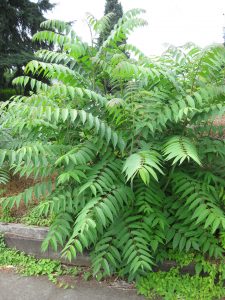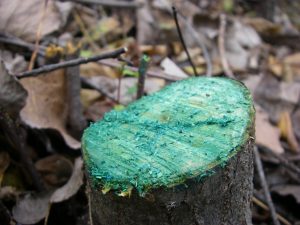Paintbrush in hand, I timidly reached toward the freshly cut stump and applied the dark blue chemicals. I had killed my first heavenly tree. To this day, I have not come to terms with the invasive tree removal we participated in with the James River Association. The Tree of Heaven is an invasive and non-native species in Virginia and stunts the growth of surrounding species. I had no problem removing the particular species – it is the removal method I am contemplating. We were unable to simply cut the trees because doing so would cause the tree to send signals to produce root sprouts. Instead, we needed to apply herbicide after cutting the tree to the chemical could breach the roots and kill the tree from its source. But why is there not another way? We are taught that herbicide can negatively impact the environment and the products can remain in the soil for long periods of time. Are we doing more harm removing the invasive species than if we just left them there? I asked the volunteers why we were using the herbicide and they responded by saying, “That is simply how the Tree of Heaven is removed.” But how do we know we are not ruining the environment?
There are many herbicides such as atrazine that are banned in other countries, but not our own. Atrazine is the second-most commonly used pesticide in the United States and is currently illegal to use in the European Union due to reproductive effects on mammals and birds. There must be something our country is missing. We are allowing ourselves to use these harsh chemicals for economic gain without considering the impacts they have on our local ecosystems. Clearly there needs to be more research focused on herbicides and their effects on surrounding water, land, and wildlife. We are blinding ourselves from understanding the influence of chemicals we create so we should strive to find the answer.


